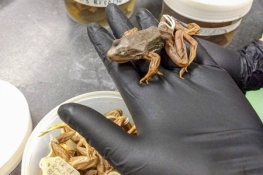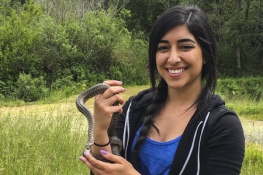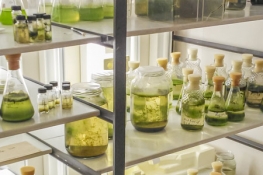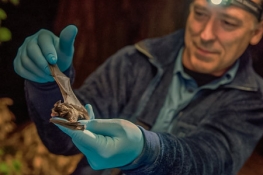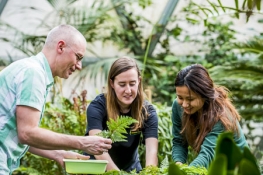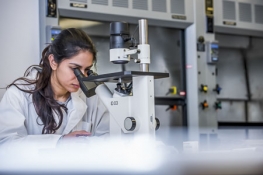Emily Jones, Ph.D.
Lecturer - Botany
I grew up in Arcata, CA. I attended UC Davis for undergrad, where I majored in Evolution and Ecology. This was followed by a masters degree in Biological Sciences at the University of Rhode Island and a Ph.D. from the joint-doctoral program in Ecology at San Diego State and UC Davis. I also worked as a postdoctoral research associate with the NOAA Center for Coastal and Marine Ecosystems at Florida A&M University.
Specialty Area
Marine community ecology, seaweed-herbivore interactions, causes and consequences of biodiversity change
Education
Courses Taught
Research
I am a broadly trained marine community ecologist who seeks to understand environmental and biological factors that structure populations and communities. Three of my research themes include: 1) understanding how marine intertidal herbivores structure macrophyte communities, including selecting for primary producer defenses and altering species composition and diversity, 2) investigating drivers of biodiversity change in nearshore communities, and 3) examining how variation in biodiversity affects ecosystem processes.
Publications
- Jones, E. and J.D. Long. 2018. Biogeographic variation in the sensitivity of an herbivore-induced seaweed defense. Ecology 99(8):1748-1758.
- Jones, E. and J.D. Long. 2017. The relative strength of an herbivore-induced seaweed defense varies with herbivore species. Marine Ecology Progress Series 581:33-44.
- Thornber, C.S., E. Jones, and M.S. Thomsen. 2016. Epibiont-marine macrophyte assemblages. Pages 43-75 in Emil Olafsson, editor. Marine Macrophytes as Foundation Species. CRC Press, Boca Raton, FL.
- Long, J.D., L.D. Porturas, E. Jones, C.K. Kwan, and G.C. Trussell. 2013. Seaweed traits linked to wave-exposure determine predator avoidance behaviors. Marine Ecology Progress Series 483:143-151.
- Williams, S.L., M.E.S Bracken, and E. Jones. 2013. Additive effects of physical stress and herbivores on intertidal seaweed diversity. Ecology 94:1089-1101.
- Bracken, M.E.S., E. Jones, and S.L. Williams. 2011. Herbivores, tidal elevation, and species richness simultaneously mediate nitrate uptake by seaweed assemblages. Ecology 92(5):1083-1093.
- Rohr, N., C.S. Thornber, and E. Jones. 2011. Epiphyte and herbivore interactions impact recruitment in a marine subtidal system. Aquatic Ecology 45:213-219.
- Jones, E. and C.S. Thornber. 2010. Effects of habitat-modifying invasive macroalgae on epiphytic algal communities. Marine Ecology Progress Series 400:87-100.
- Thornber, C.S., E. Jones, and J.J. Stachowicz. 2008. Differences in herbivore feeding preferences across a vertical rocky intertidal gradient. Marine Ecology Progress Series 363:51-62.

